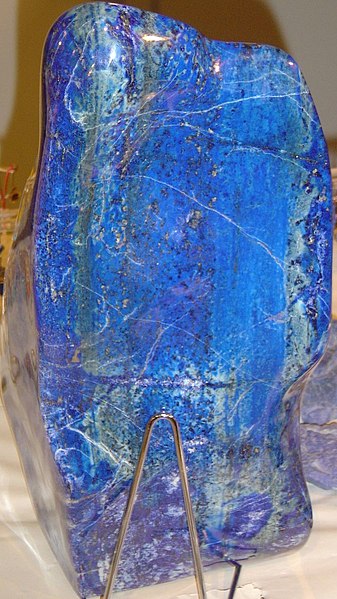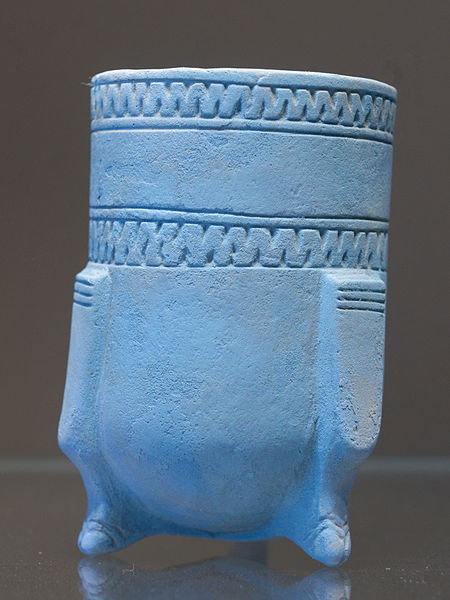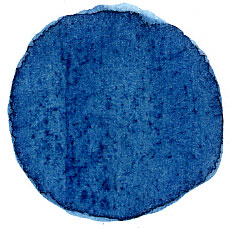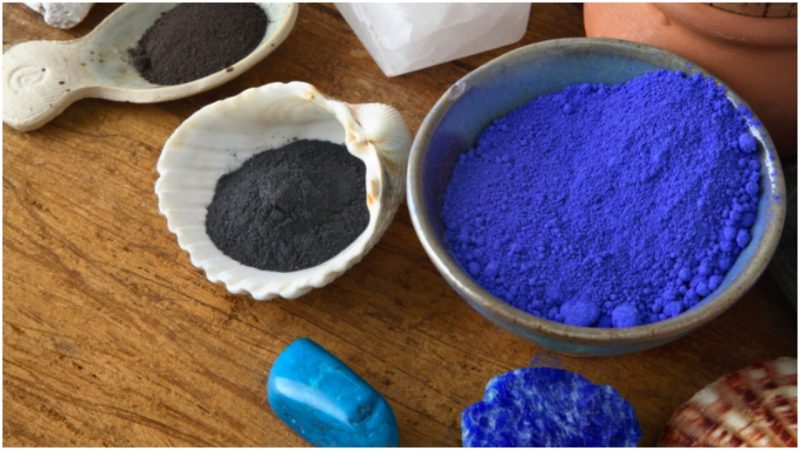The ethereal and beautiful color blue is the color of our world. Yet in ancient times, not many people could grasp and see it. In The Odyssey, Homer describes a “wine-dark sea,” without mentioning the word “blue” in the text of his book.
One of the reasons why our ancients couldn’t “see” this color was because, despite its pervasiveness, it was and is relatively rare in nature, with elements that are mostly green or earth-toned. The sky above us looks blue but that notion is, in fact, a trick of the sunlight beams gathered in the atmosphere. Many ancient cultures couldn’t distinguish blue in the palette of hues and some of them even couldn’t see it at all, at least not the way we perceive it today. In the days of the ancients, blue seemed mysterious enough to make it the color of mysticism and become the symbol of heaven.
The birth cradle of the blue pigment is found in the Middle East, present-day Afghanistan. This area holds the world’s largest and purest deposits of the semi-precious stone Lapis Lazuli, a deep blue gem that, in the distant past, was worth more than gold. The rare Lapis Lazuli was praised by the Egyptians, Romans, and, later, the artists of Western Europe. Aware of the blue’s scarcity, the Ancient Egyptians developed the first synthetic blue pigment as a substitute, which soon after was recognized as the “Egyptian Blue.” The pigment was a form of calcium-copper silicate. However, the recipe for its production is recorded as lost centuries ago. A similar yet slightly different pigment was developed by the Chinese who used it for painting porcelain–this was later followed by smalt and derivative forms of cobalt blue that were also applied to ceramics. The ancient Egyptians held their blue in high esteem, associating it with the praised figures of their pharaohs.

Through the ages, European cultures continued equating blue with the color of God, and this is much evident in the architecture and design of the great Gothic cathedrals in which builders added smalt-glass windows. During the Middle Ages and the Renaissance, Lapis Lazuli was mined by hand and ground into a pigment that was later shipped across the Mediterranean to Europe. This labor-intensive process, which included a journey across the sea, led to a name of “Ultramarine Blue.”
This pigment was so expensive and prized that it was separately noted in commission invoices. There were hardly any artists who could afford it and those who did were most often supported by affluent patrons. Due to its spare use, “Ultra Marine” was reserved only for the most eminent figures in a painting, such as Christ, the Madonna and Child, and representations of Heaven.

The beginning of the 19th century introduced improvements in chemistry that resulted in the production of the modern, pure forms of cobalt blue and Prussian blue, both manufactured as pigments used for artwork.
The free use of blue at the time is obvious in the paintings of common subjects like landscapes, or objects in still nature. In 1824, the French Society of Industry offered a cash prize for production of artificial ultramarine that, two years later, was achieved by Jean Baptiste, the father of “French Ultramarine.” This invention marked the low-cost availability of a deep blue for the first time in history.

The dawn of the 20th century and the modern industrial chemical labs extended the range of pigments available to artists. In the mid-1930s, the first phthalocyanine blue pigment was developed, often known as “phalo blue.” Phalo blue is a deeply saturated, mineral synthetic pigment which tends to lead to green.
In the 1950s, one man’s obsession with French Ultramarine revived the popularity of this color. The French artist Yves Klein, a real aficionado of the color, wanted to express his passion by creating the purest blue. By making a special formulation of ultramarine, “International Klein Blue” emerged. One of the main features of Klein’s blue was that it retained its purity on the canvas much longer than regular paints. Applied on several uniformed canvases, this blue is the core of Klein’s most distinguished contributions to contemporary art, embracing and puzzling millions of museum visitors every day.
